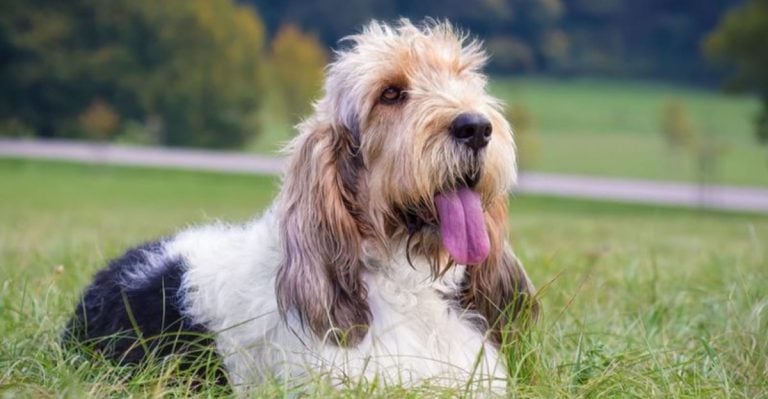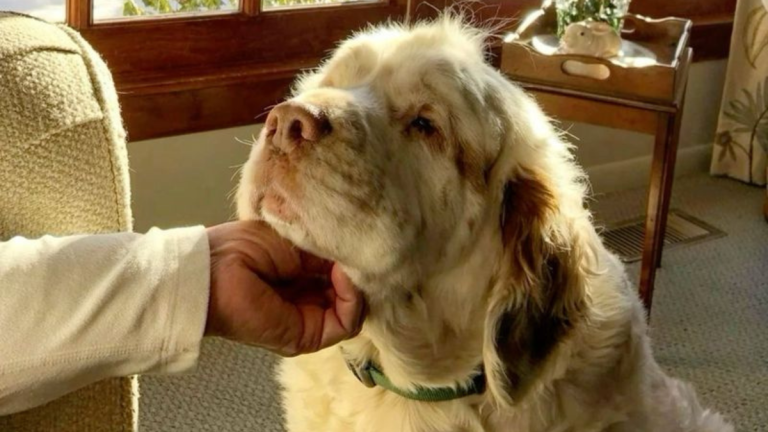15 Dog Breeds That Struggle to Share Space with Other Pets
Not all dogs are natural socialites when it comes to sharing their home with other animals. Some breeds have strong hunting instincts, territorial tendencies, or simply prefer being the only pet receiving attention. Understanding these breed-specific traits can help you make informed decisions about bringing multiple pets into your household and create harmony in your multi-pet home.
1. Alaskan Malamute
Born to pull heavy sleds across frozen tundras, these powerful Arctic dogs have a strong prey drive that makes smaller pets look like potential targets. Their wolf-like appearance isn’t just for show – Malamutes often maintain pack mentality and may challenge other dogs for dominance.
Centuries of breeding for independence means they frequently decide for themselves which animals deserve respect. Early socialization helps, but never fully eliminates their natural instincts.
When properly trained, some Malamutes can learn to tolerate other large dogs, but cats and small animals typically remain at risk in their presence.
2. Doberman Pinscher
Developed specifically as protection dogs, these athletic canines possess an innate wariness that extends to unfamiliar animals. Their protective instincts can trigger defensive responses when other pets approach their human family members.
Loyalty runs deep in their veins, often viewing themselves as personal bodyguards rather than just pets. Without proper introduction protocols, Dobermans may perceive new animals as potential threats to their established household position.
While exceptionally intelligent and trainable, their strong-willed nature requires consistent boundaries when multiple pets share living spaces. Female Dobermans typically show more tolerance toward other household animals than males.
3. Basenji
Originally bred as hunting companions in Central Africa, these unique “barkless” dogs maintain a high prey drive that makes cohabitation with smaller animals challenging. Their silent stalking behavior gives little warning before they pounce on anything that triggers their hunting instincts.
Many owners are surprised by how cat-like Basenjis behave – climbing furniture, grooming themselves meticulously – yet ironically, they rarely get along with actual cats. Their independent nature means they’re less interested in pleasing humans than following their instincts.
Even with extensive training, these clever escape artists require secure environments when smaller pets are present to prevent hunting behaviors from emerging.
4. Chow Chow
Resembling fluffy lions with their distinctive blue-black tongues, these ancient Chinese breeds approach other animals with suspicious reservation. Their natural aloofness extends beyond humans to include fellow four-legged housemates, often preferring solitude to shared companionship.
Historically serving as palace guards, Chows maintain a dignified demeanor and strong territorial instincts. Personal space matters tremendously to these independent thinkers – they rarely appreciate other animals invading their carefully established boundaries.
Aggression toward other dogs emerges frequently in poorly socialized Chows, making early and consistent exposure to various animals essential if multi-pet households are planned.
5. Siberian Husky
Stunning blue eyes and wolf-like appearance hint at this breed’s strong predatory nature, particularly toward small creatures that trigger their chase instinct. Despite their friendly reputation with humans, these energetic sled dogs view rabbits, cats, and even small dogs as potential prey rather than playmates.
Pack mentality runs strong in Huskies, often establishing complex hierarchies when multiple dogs live together. Their notorious escape artist tendencies combined with high prey drive create risky situations for neighborhood pets.
Extremely vocal, these talkative canines frequently startle other animals with their howls and distinctive “conversations,” causing stress for pets accustomed to quieter households.
6. Shiba Inu
Famous for their fox-like appearance and internet meme status, these Japanese hunting dogs possess a fiercely independent streak that complicates relationships with other household pets. Territorial by nature, Shibas often claim specific spaces, toys, and even people as exclusively theirs.
Resource guarding appears frequently in this ancient breed, making shared food areas potential conflict zones. Their catlike cleanliness and aloof demeanor sometimes creates unexpected friction with actual felines who recognize similar behaviors.
Surprisingly strong for their compact size, these determined dogs require careful supervision around smaller pets who might inadvertently challenge their established boundaries or trigger their natural hunting instincts during play.
7. Akita
Revered in Japan as symbols of good health and protection, these powerful dogs typically form intense bonds with their human families while maintaining skepticism toward other animals. Their imposing physical presence and silent stalking behavior can intimidate even much larger pets.
Same-sex aggression appears frequently in this breed, making multiple-dog households particularly challenging. Ancient hunting heritage means small animals often trigger predatory responses that override training.
Quietly observant, Akitas carefully monitor household activities and may intervene if they perceive other pets as threatening their family’s harmony. Their stoic nature means warning signs of discomfort are often subtle until conflict erupts.
8. Jack Russell Terrier
Don’t let their small stature fool you – these tenacious terriers were developed to hunt foxes and rats, making them formidable opponents despite their size. Boundless energy combined with lightning-quick reflexes means they often overwhelm more docile pets with their intense play style.
Fearlessness defines this breed’s approach to life, willingly confronting dogs many times their size. Their piercing, high-pitched barks frequently irritate sensitive animals and can trigger defensive responses from larger pets.
Digging and chasing are hardwired behaviors in these working terriers, creating stress for prey animals like rabbits, hamsters, and birds sharing their living space. Even well-trained Jacks require vigilant supervision around smaller household pets.
9. Dachshund
Affectionately called “wiener dogs” for their distinctive long bodies, these German hunters were specifically bred to pursue badgers into underground dens – a history that explains their tenacious nature. Stubbornness runs deep in their elongated bodies, making them surprisingly determined when they’ve decided another pet doesn’t belong.
Protective barking occurs frequently, alerting the household to perceived threats – including new animals. Despite their diminutive size, these bold little dogs rarely back down from confrontations with much larger pets.
Burrowing behaviors can frustrate other animals as Dachshunds tunnel under blankets, pillows, and even other pets’ bedding in search of comfort or prey. Their hunting instincts remain particularly strong around small rodents and birds.
10. Australian Cattle Dog
Developed to drive stubborn cattle across Australia’s rugged outback, these tireless working dogs approach everything with intensity – including interactions with other pets. Nipping at heels comes naturally to these herders, creating friction with animals unfamiliar with being “managed” during everyday activities.
Constant motion defines this breed’s approach to life, overwhelming more sedentary household companions with their perpetual activity. Mental stimulation requirements exceed most other breeds, leading to problematic behaviors when bored – often at other pets’ expense.
Fiercely loyal to their chosen person, these intelligent dogs may become jealous when attention shifts to other animals. Their problem-solving abilities mean they quickly learn how to provoke reactions from household companions they view as competitors.
11. Rhodesian Ridgeback
Named for the distinctive ridge of backward-growing hair along their spine, these powerful African hunters were bred to track and corner lions – a heritage reflected in their confident approach to other animals. Athletic prowess combined with independent thinking creates challenges when introducing new pets into their established territory.
Pack hierarchy matters significantly to Ridgebacks, often testing boundaries with other dogs until dominance questions are settled. Their imposing size and serious demeanor can intimidate more sensitive pets, creating stress even without direct confrontation.
Protective instincts run strong in this breed, sometimes extending to certain family members but excluding other pets from their circle of trust. Surprisingly sensitive despite their tough exterior, they may retreat from overly boisterous animal housemates.
12. Weimaraner
Instantly recognizable by their distinctive silver-gray coats and penetrating light eyes, these German hunting dogs possess tracking and pointing instincts that remain strong despite generations as companion animals. Separation anxiety occurs frequently, sometimes manifesting as destructive behavior toward other pets’ belongings or territories.
Velcro dog tendencies mean they shadow their favorite humans constantly, potentially creating jealousy issues with other attention-seeking pets. Their athletic builds and boundless energy can overwhelm older or more sedate animal housemates during play sessions.
Exceptional intelligence combined with a stubborn streak means they quickly learn which household rules they can bend – especially regarding interactions with other pets when humans aren’t watching. Their hunting heritage makes small, quick-moving pets particularly challenging companions.
13. Bullmastiff
Originally developed by gamekeepers to track and hold poachers without mauling them, these massive guardians maintain strong protective instincts that extend to their families but not necessarily other pets. Their imposing size alone can create accidental issues with smaller animals during normal household activities.
Surprisingly sensitive despite their intimidating appearance, Bullmastiffs form deep emotional bonds that can manifest as jealousy when attention is divided. Stubborn determination makes them difficult to redirect once they’ve decided another pet has crossed their boundaries.
Watchfulness characterizes their approach to home life, constantly monitoring interactions and sometimes intervening in ways that create tension with established pet dynamics. Their deep, rumbling growls serve as serious warnings that even humans sometimes struggle to interpret correctly.
14. Scottish Terrier
Affectionately known as “Scotties,” these distinctive-looking terriers approach life with remarkable determination packed into their short-legged frames. Bred to hunt rats and other burrowing creatures, their predatory instincts remain particularly strong around small, quick-moving pets like hamsters and birds.
Independence borders on stubbornness in this breed, making them resistant to accepting new animal housemates after establishing territory. Their dignified demeanor means they often refuse to engage with overly playful pets, creating tension through avoidance rather than direct confrontation.
Digging behaviors emerge frequently, sometimes destroying other pets’ resting areas or hiding spots in their determined excavation efforts. Despite their small size, their confident personalities mean they rarely back down from confrontations with much larger animals.
15. Dalmatian
Forever associated with firefighters and Disney movies, these spotted athletes were originally bred to run alongside horse-drawn carriages – explaining their seemingly endless energy reserves. High exercise needs often lead to frustration when confined with more sedentary pets, resulting in pestering behaviors that irritate less active animal companions.
Sensitivity runs surprisingly deep in these striking dogs, sometimes manifesting as startle responses or anxiety around unpredictable pets. Their strong bonding tendencies can create jealousy issues when attention must be shared with other household animals.
Historically serving as guard dogs for traveling coaches, their protective instincts sometimes extend to certain family members while excluding other pets from their circle of trust. Proper socialization helps but never completely eliminates their natural wariness of unfamiliar animals.





















